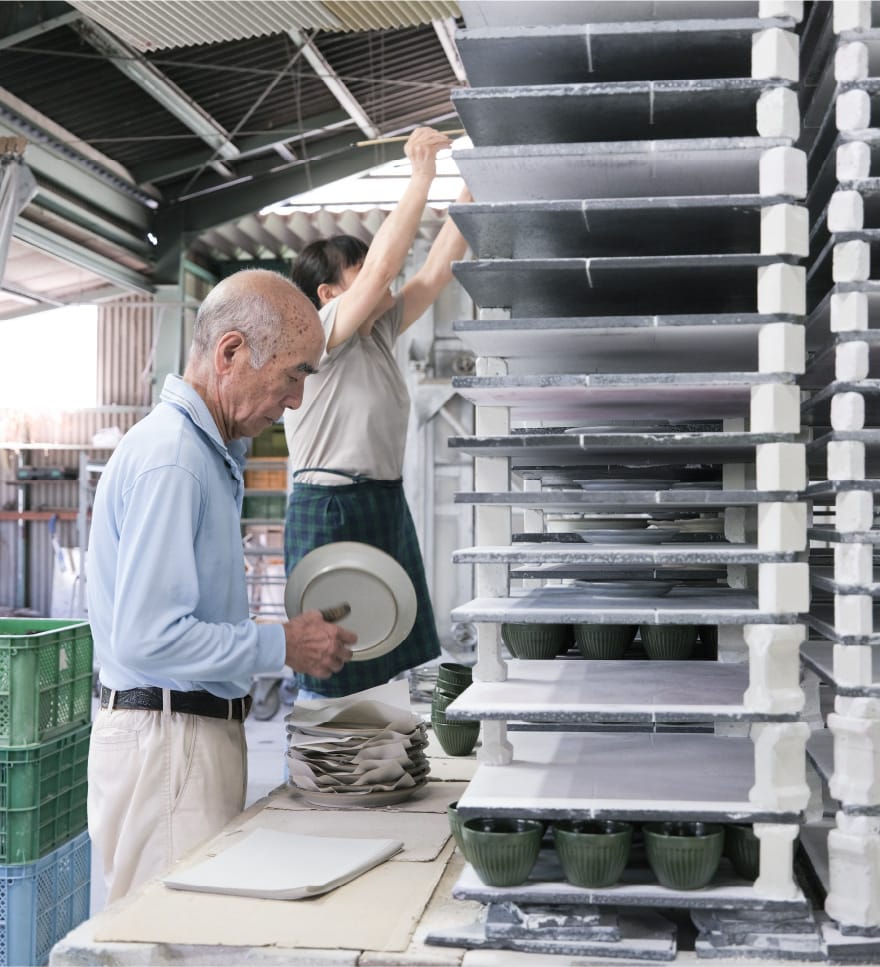Seeking a satisfactory combination of form, clay, and color
About 25 years ago, when the third generation Chikara joined the company, Minoyaki was at its downturn.
With a sense of crisis over its dependence on distributing companies, the company embarked on manufacturing its own products, believing that it would not be able to survive unless it put its “uniqueness” to the forefront.
“Neither my father nor I were satisfied with the current situation”. Chikara’s goal was to make the most of the pressure casting technique. Pottery has a wide range of expression. In addition to the various shapes obtained through pressure casting, the combination of clay and glaze can produce potteries of many textures and colors.
The artisan comes up with an idea for either the shape or the color, and then decides on a concept to fit the shape he has in mind. He makes prototypes using the Tatara process and consults with a mold maker and glazier, respectively, in pursuit of the ideal shape and color. “All I have to do is tell them what I want to make, and I really appreciate the mold makers and glazers who help me shape it” says, Chikara. Four types of clay are used: red clay, black clay, white clay, and porcelain clay. Even when the same glaze is applied, different types of clay produce different shades of color. For example, black clay has a slightly sunken color, while porcelain clay has a crisp color. The glaze is changed for each type of clay, and test firing is repeated many times to ensure that the clay and the color match perfectly. There is no room for compromise. However, there is one thing he keeps in mind, which is the user. “I want to make novel pottery but what’s most important is ease of use” he says. He makes his dishes a little larger than ordinary household plates to make both serving and eating more comfortable. This is where his many years of experience in making dishes for commercial use comes into play.









